Enjoy this post and share with your friends! The Only Ratatouille to Make - No. 352Tomato Diaries Part 2: Aristotle, Julia Child + a favorite organic farmerTHERE’S A PHILOSOPHICAL STATEMENT often linked to Aristotle saying the whole is more than the sum of its parts. When I hear this, I think of ratatouille. Right? Isn’t a warm pan of ratatouille—the French eggplant, zucchini, and tomato stew originating in Provence—much more interesting than a basket of vegetables? You know and I know it’s the process of cooking the veg in olive oil with garlic, salt, pepper, and loads of fresh basil that makes it scrumptious. The time it takes to saute, stir, and lightly roast is well spent because ratatouille is one of my favorite summer foods. And it is part two of my impromptu Tomato Diaries here at Between the Layers. I sat down at the kitchen table a few weeks ago wondering how to express my love for the summer tomato, and this mini series bubbled up. The first segment last week for paid subscribers was about my obsession with growing tomatoes and the lengths I will go to in researching and protecting my crop. I shared how to roast them and a garlicky summer sauce to pour over tomatoes. A conversation 20 years ago with Middle Tennessee farmer Tana Comer turned how I had looked at ratatouille on its head.Tana supplied our family with endless organic veggies for so many summers as we were the recipients of one of her first CSA boxes. She shared recipes when we met her in a church parking lot each Wednesday afternoon to pick up our box. One recipe I will never forget was her way to make ratatouille. The secret, said Tana, is to saute each vegetable separately, and then they go into the oven together to “roast.” Tana said if you toss all the veg into the pan at the same time, they don’t preserve their own unique flavors. They just stew and what results tastes like boiled vegetables. Sadly, this is how most ratatouille is made. But once you make it Tana’s way, with a skillet and a baking dish bound for the oven, you will never go back. I pulled out my copy of Julia Child’s The French Chef Cookbook (1961), and on page 57 was her Ratatouille recipe. (It’s also in her Mastering the Art of French Cooking, Volume 1.) She also advises to cook the vegetables separately and then ‘’everything is combined for a brief communal simmer.’’ This is one of those classic Julia recipes—not as arduous as the long ones that take all afternoon to assemble and call for step by step until the sink is piled with dishes and guests are coming in an hour for dinner and you look like hell. But you grab a quick shower and change of clothes, dim the lights, pour some wine, and everyone gathers around your feast with oohs and aahs, then you taste the food and say to yourself, this is so good! The reason why may be your genius cooking or the steps. Julia’s steps. Tana’s steps. Simply put, there is more deliciousness when you layer in seasonings and take your time. In the case of ratatouille, it’s more delicious step by step because the eggplant has a chance to caramelize in the skillet and seal in its juices. Ditto the zucchini. The onions and peppers bathe together in the oil, and the tomatoes simmer with garlic because they were birth partners from the get-go. Then, Julia tells you to simmer. But I agree with Tana that you should roast ratatouille to doneness. Where were you in 1975?I’ve been wanting to write about a 1975 recipe like ratatouille. Ever since this year was ushered in, I’ve thought about songs and recipes that date back 50 years. Shining Star from Earth Wind and Fire. One of these Nights by the Eagles. Bohemian Rhapsody from Queen. And zucchini. In 1975 it was coming into American kitchens. Many other things were happening in America in 1975. The Watergate scandal had been exposed, Nixon had resigned, and his vice-president Gerald Ford was now president. The Fall of Saigon marked the end of the Vietnam War. Bill Gates and Paul Allen were founding Microsoft. Saturday Night Live debuted, and the vegetarian Bible called The Moosewood Cookbook, first self-published in 1974, was on store shelves. And that’s how I was introduced to ratatouille. I would make it a decade later at La Varenne cooking school in Paris and years after that, from Julia’s cookbook. But Tana’s recipe is the only one I want now. It just tastes better. We serve it alongside fish off the grill or shower it with feta and spoon it onto crusty baguettes. (This summer I’ve made such a big pan that I’m freezing some, too. Not sure how that will turn out, but come October, I think it might be welcome.) Tana’s ratatouille, now my ratatouille, brings together fresh and bold flavors and especially summer tomatoes. These flavors could stand on their own, but together they are stronger. In ratatouille and in life, the whole is grander than the sum of its parts, or at least that’s my interpretation of Aristotle. Fifty years from now, I hope there will still be great recipes to remember. They allow us to time travel, reflect, think about more than just the meal. Philosophically speaking, they might help us assess from where we came and where we want to go. - xo, Anne P.S. Happy Birthday month, Julia! (And all of us with August birthdays!) She was born August 15, 1912 and died in 2004 just shy of her 92nd birthday. To read more about Julia Child’s ratatouille, here’s a treat. In honor of her 100th birthday in 2012, friends gathered to share delightful stories about her impact on the Cambridge dinner party scene. The Greek philosopher Aristotle wrote 2,375 years ago. It’s no wonder he is often misquoted today! It is correct he wrote “the whole is something besides the parts” and “the whole is not the same as the sum of its parts.” If you’ve got time to spare and like to deep think, here’s an interesting link. THE RECIPE: Tana’s Roasted RatatouilleIf you toss all the veg into the pan at the same time, they don’t preserve their own unique flavors. They just stew together and what results tastes like boiled vegetables. And sadly, this is how much ratatouille is made. But once you make it this way, with a skillet and a baking dish for the oven, you will never go back. I roast a little less time than I used to. This is wonderful freshly made or after a day kept in the fridge. We spoon it over pasta or just serve it with crusty bread and cheese. With fresh tomatoes, the juices are so sweet! Makes 6 to 8 servings
You’re on the free list for Anne Byrn: Between the Layers. If you’re liking what you’re reading, why don’t you become a paying subscriber for more recipes, stories, and content. |







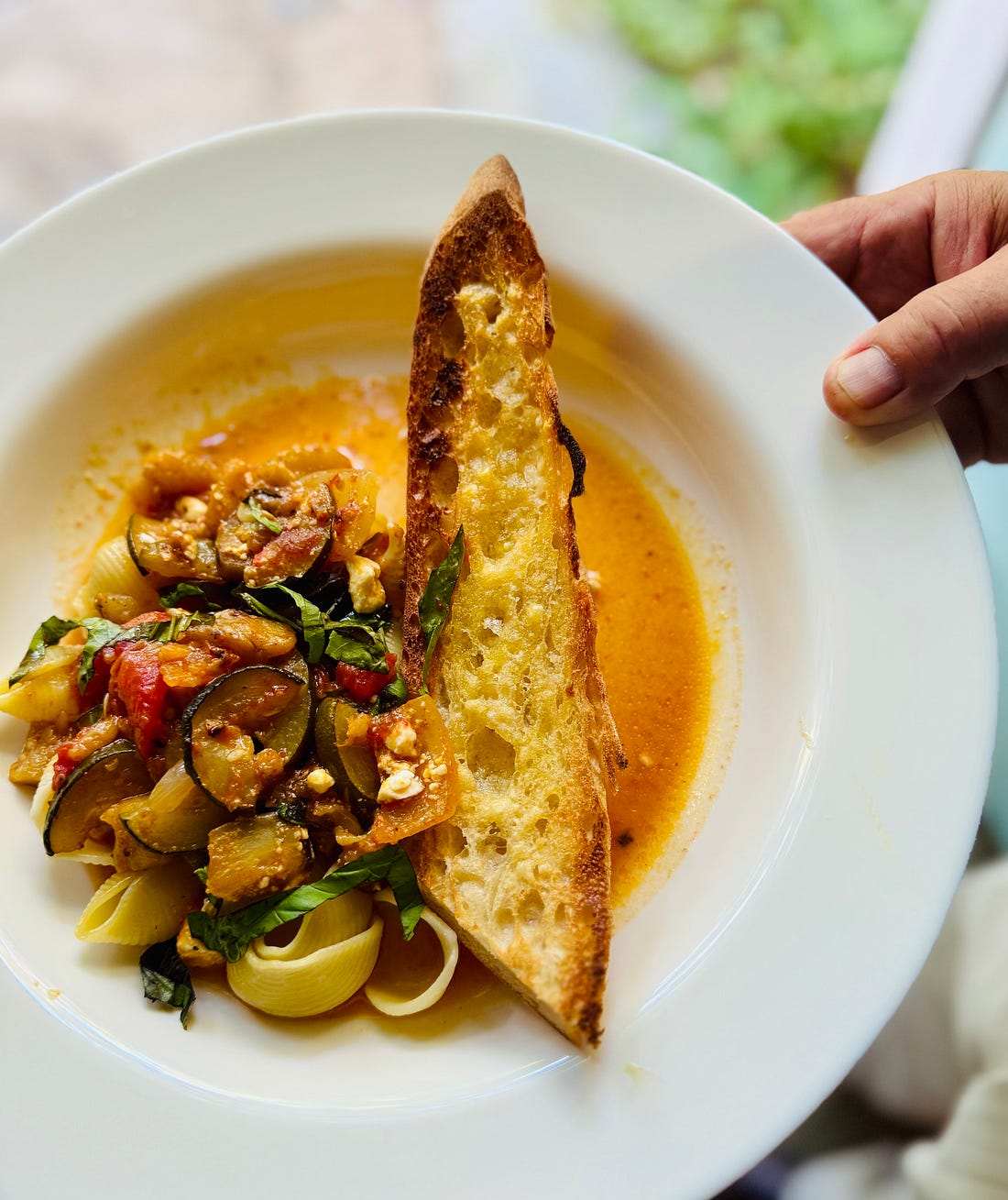
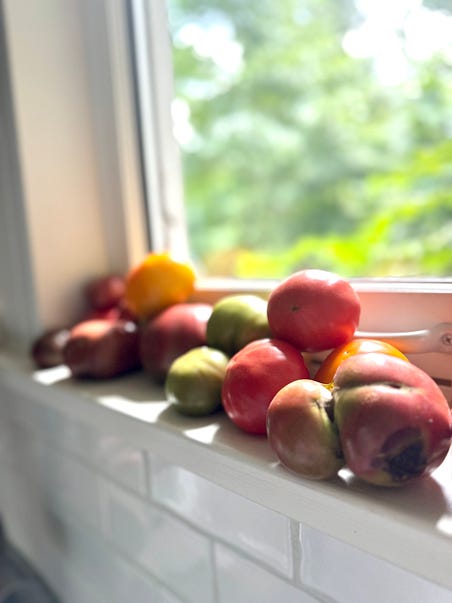
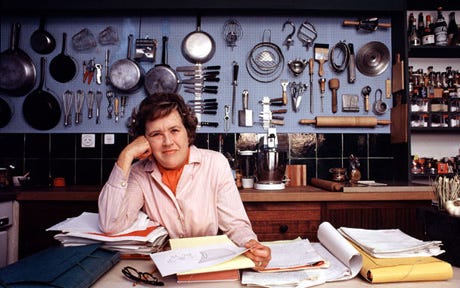
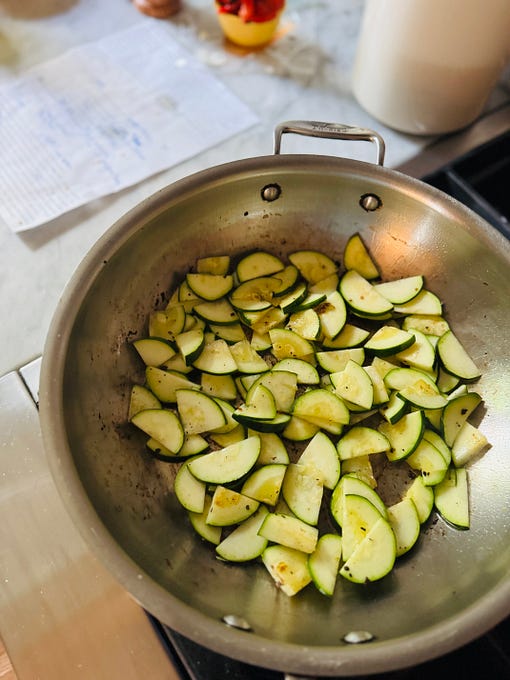
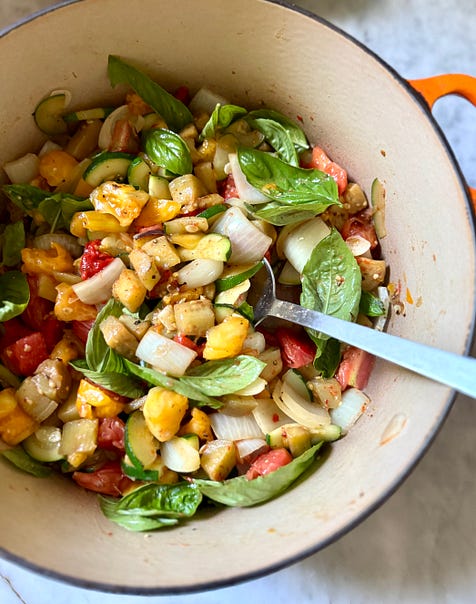

0 comments:
Post a Comment